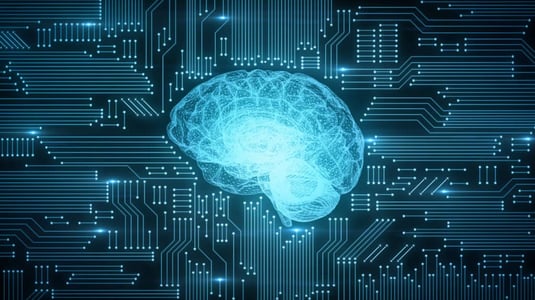Evolution of Artificial intelligence (AI)

Although AI had been around for centuries; Alan Turing was the first to experiment with machines to see if they could imitate human intelligence and thus created the “imitation game.” The concept of AI then boomed around 1956, following a conference which had set out to explore the idea of whether or not a machine could ever reason just like us i.e., be capable of abstract thinking, be self-critical and be problem-solving. It’s around this decade that the term “artificial intelligence” was coined.
There is now great talk of artificial intelligence in many industries, among these are: the automotive sector and IoT enabled medical devices. AI is now being referred to as the backbone of Google. AI even plays a key role in drivers-less cars which could become a day-to-day occurrence in the years to come. The terms “smart” and “connected” are both being popularized in many industries and as of late, the main culprit behind this trend is often, as you may have guessed, artificial intelligence.
AI increases productivity by quickly detecting issues and solving/reducing them in a short span of time. Real-time problem solving can sometimes save you from mass spending on repairs and lost business. In complex industries such as PCBA (Printed Circuit Board Assembly), quick lead time through process optimization and technological advances is the key to success. Automation and advanced computing have both contributed to improving productivity across different sectors; AI will be the next big contributor.
Incorporating AI to Your PCB Design
The PCBA industry is undergoing some major changes as we speak, due to artificial intelligence making the whole production process less complex. Designing printed circuit boards is a complicated process because it involves people from many different fields and disciplines in electrical engineering ; it can easily keep a whole team busy. To avoid having your printed circuit board explode or suffer any damages, some qualified engineering skills are usually needed. Unfortunately, engineer services aren’t cheap and finding an available engineer can be difficult. Thanks to AI, this process can be done within hours instead of weeks. It’s called auto-routing : based on neural networks, this kind of AI system is fed by numerous well-designed human-made PCB designs, which allows it to define automatically the most efficient design. AI allows for faster production as well as cheaper printed circuit designs.
Incorporating AI to PCB design is possible and would represent innovative progress within manufacturing companies. In highly automated and efficient manufacturing companies, PCB design ends up having high potential for improvements in the whole manufacturing process, which makes it a great environment for AI. The least we can say is that 2019 promises to be a good year for AI.
Impact of AI in EMS
 In the conception phase of PCB, some EMS have also come forward using AI and Machine Learning for quotation, sourcing and planning purposes.
In the conception phase of PCB, some EMS have also come forward using AI and Machine Learning for quotation, sourcing and planning purposes.
Choosing the right EMS partner is not an easy task, but it is a crucial for your project to succeed. AI offers a good number of advantages for EMS and their partners:
- improved performance;
- effective asset management;
- reduced scrap rate;
- better supply chain management and more;
- effective in preventing equipment breakage (temperature increase...);
- better maintenance of equipment (by machine learning); and
- better quality control.
AI is capable of detecting potential issues before they digress by using image recognition. This allows you to avoid having to scrap work or start over which in turn, saves on costs. AI sorts risks in the same way that human intervention would, but it can do the same task more precisely and for a lower cost.
The future is bright for PCBA: big data volume and computer processing power keeps increasing which means that the efficiency of AI decisions in PCBA manufacturing can only improve. By choosing an electronic contract manufacturing company (or EMS provider) that is experienced and has locations all over the globe like Asteelflash, your product is on its way to a good start!


